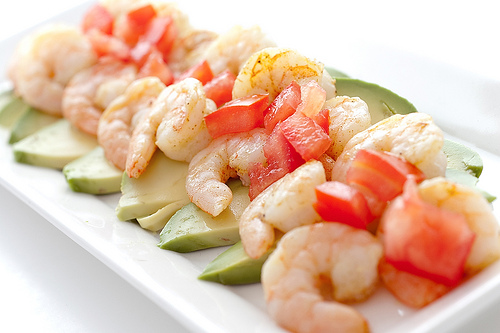
 As the oil gradually disperses in the Gulf, many of us have one question on our minds-how do we know the fish we’re eating is safe?
As the oil gradually disperses in the Gulf, many of us have one question on our minds-how do we know the fish we’re eating is safe?
It’s been awhile since we could just eat whatever fish was put in front of us without worry. Mercury contamination, alone, has put many of us on the alert, especially pregnant women and the elderly, or people fighting diseases like cancer. We know that swordfish and shark are higher on the risk list, but after that, the waters get a little murky. How do we navigate the seafood menus of today?
On the whole, seafood is still really good for us, as it’s packed with healthy omega-3 fatty acids and low in fat and calories. So the answer is not to eat less fish, just to be more careful with our choices. According to the National Smart Seafood Guide of 2010, the first thing we need to do before making a seafood purchase is to ask questions. Where is this seafood from? Is it caught or farmed locally? Is it associated with any contaminants? For updates on seafood specifically from the gulf, check with the government’s site on the subject. So far, they have reported that fish and shellfish harvested from areas reopened or unaffected by the closures are considered safe to eat.
Otherwise, there are a few fish that are more likely than others to be either unsafe or currently unsustainable. They include the following:
Catfish: Some catfish are imported from other countries, where chemicals and antibiotics are less likely to be regulated. Check where this fish comes from before eating it.
Caviar: Though usually safe to eat, beluga sturgeon are in high demand for their eggs (caviar), and so are overfished and poached. To contribute to sustainability, pass this one by.
Cod: Like caviar, Atlantic cod is overfished, and is frequently caught with nets that can harm other animals and plant life.
Eel: The American eel has high concentrations of mercury and PCBs, toxic chemicals that can be harmful to human health. Eat this one only rarely.
Flatfish (flounder, sole, and halibut): Again, these fish are in high demand and have been overfished for decades.
King crab (imported): When you want crab, check where it comes from. If it’s from another country, you may want to think twice, as crab caught in Russia, for instance, can often exceed the allowable regulations, making it illegal.
Shrimp (imported): Shrimp is still mostly safe, but when it comes from other countries, whether or not it’s sustainable depends on that country’s regulations and employment conditions. You may want to opt for U.S. shrimp.
Orange Roughy: This is another fish that can be high in mercury. It has a long lifespan and is slow to mature. Eat this one only once in awhile.
Salmon: Choose wild over farmed, as farmed salmon may contain PCB contamination, and may also contain pesticides and antiobiotics.
Chilean Seabass: Unfortunately, many seabirds are killed during illegal fishing for this fish, including endangered albatrosses. Chilean seabass may also have high levels of mercury.
Shark: High mercury risk.
Bluefin Tuna: High mercury and PCB risk. These are also overfished, and are listed as endangered.
Have you adjusted your fish-eating habits to increase your safety? Please share your story.
Photo courtesy rkazda via Flickr.com.

